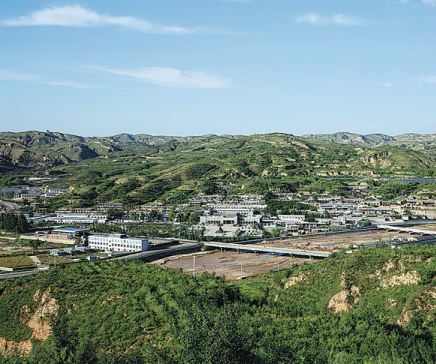Red tourism drives growth of township

The township of Caijiaya is a famed Red tourism destination in Shanxi province. [Photo by Zhu Yaping for China Daily]
In the warming spring days of March when hundreds of wild flowers bloom, the township of Caijiaya in Xingxian county in the west of Shanxi province welcomed hundreds of visitors daily.
The increasing number of tourists over the past few years is the result of a new railway line and a station in 2018. Four trains are now running on a daily basis between Caijiaya and the provincial capital of Taiyuan.
But the railway alone cannot make the township a hot tourist destination.
By the Weifen River, a branch of the Yellow River, and at the heart of the Lyuliang Mountains, Caijiaya looks like an ordinary village in the region.
However, more than 80 years ago, it was part of the Jinsui Revolutionary Base, home to the headquarters of the 120th division of the Eighth Route Army led by famed Chinese general He Long (1896-1969).
The army was stationed there to protect Yan'an in Shaanxi province, the cradle of the Chinese Communist revolution during the War of Resistance Against Japanese Aggression (1931-45) and the War of Liberation (1946-49).
Today, the Jinsui Revolutionary Memorial Hall in Caijiaya remains a silent witness to the past. Red tourism, which focuses on exploring the history of the Communist Party of China before the founding of the People's Republic of China in 1949, has grown tremendously during the past few years.
With tourists flocking to this Red tourism destination, local residents have had opportunities to improve their livelihoods with new sources of revenue. Over the past four years, the township has welcomed more than 4 million people.
In addition to tourism, Caijiaya has developed other industries to grow revenue for residents, according to the township government.
One such sector is the farming of cash crops. To date, Caijiaya has 1,200 hectares of land for growing organic coarse cereals, 4,300 hectares for walnuts, 105 hectares for medical herbs and 33 hectares for pears.
The township also operates several solar farms, which means an additional annual income of more than 1,000 yuan ($157) to every household on average.
Han Linfang contributed to this story.



